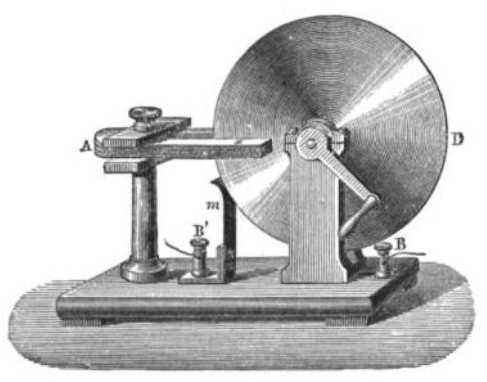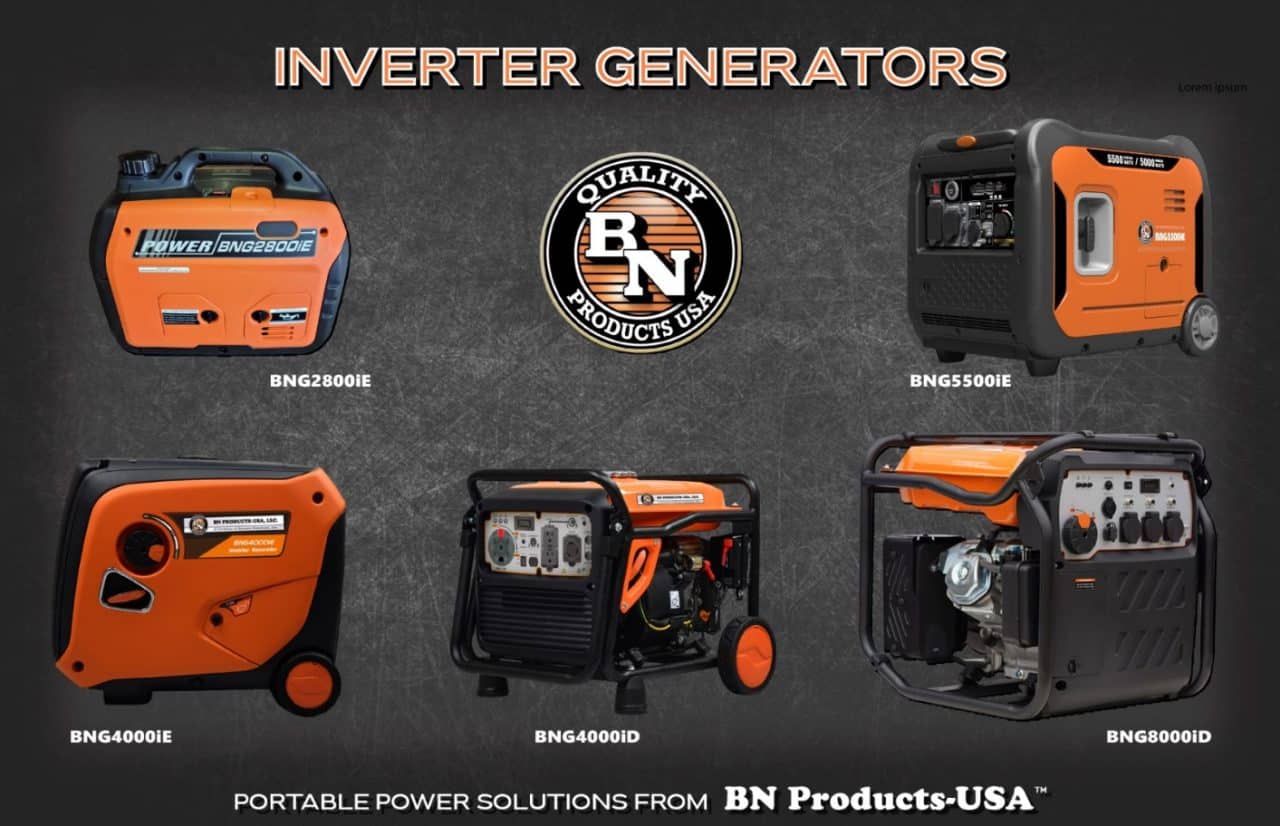By Ed Truxal, BN Products-USA™ | Email

“Portable Power Solutions at work on the Job Site… Or on Your Weekend Adventures!”
You might hear a popular sales pitch, that speaks directly to “why-you-need-to” purchase a portable generator. However, off-the-grid electricity that we can take to a construction site, a favorite fishing or camping spot – is a just an everyday necessity for tradesmen, disaster preparation, and outdoor enthusiasts alike.
Since the beginning of our dependence on electrical power as a society, this common consumer demand hasn’t really changed much, and likely won’t for a very long time.
The future of portable power technology is exciting – that future is notably less-dependent upon fossil fuels, while advancing the capabilities of battery power and clean energy. Still, portable Generator technology has also improved steadily in recent decades. Most notably, the need to safely power sensitive electronics has advanced the distinction between traditional gasoline-powered generators – and quieter, fuel-efficient, and electronic-safe units – better-known as Inverter Generators.
Chances are, if you made the choice to read this article… it’s likely that you’ve also read other articles that explain how “Inverter” generators differ from “Regular” or “Conventional” gasoline-powered Generators. There are clear distinctions between the two generator types, which naturally accompany benefits that are unique to each.
Most of us have a basic understanding of the essential function of a generator (provide electricity in places where power from the grid isn’t accessible).
Generators of differing sizes and power are as varied as the reasons why we use them. For instance, we know that a smaller power source is useful for campsite lighting or recharging mobile electronics, while substantial power plants are necessary for operating industrial machinery at remote construction sites. Because our needs vary greatly, so do the types of generators that are available on the commercial market.
The Origin of Modern-Day Electric Generators
The concept of using a machine to create, or “generate” electricity, may be older than you think! In fact, it was in 1831 that British scientist Michael Faraday, after a decade of experimentation, succeeded in proving that a magnet could induce electrical current. Within months of his successful experiment, Faraday produced a primitive, but working, electricity-generating device using a copper disk, rotating between two poles of a horseshoe-shaped magnet. The “Faraday Disk” yielded relatively low voltage, but effectively proved that electricity could be generated by changing magnetic fields that could “push” electrons through a conductive circuit, such as a copper wire (and conversely, that magnetic fields are produced by electrical current). In short, a motor can be mechanically driven to produce electricity. Today’s electric generators operate using this exact same, basic principle of converting motive energy into a supply of usable electricity.

(Public Domain Image; Émile Alglave & J. Boulard (1884) The Electric Light: Its History, Production, and Applications,
translated by T. O’Conor Sloan, D. Appleton & Co., New York, p.224, fig.142)
Since the early 1900s electrical generators have been manufactured for countless uses as small and large power suppliers. One major challenge associated to conventional generators is that the electrical output is controlled by engine speed. For instance, to produce 60-cycle alternating current (AC) used for most North American devices, a generator motor must maintain a speed of exactly 3600 RPM (or a multiple of 60) at all times – under varying loads and conditions. Any fluctuation in RPM reduces the stability of the output, which could lead to a connected device being under-powered, or a sensitive circuit being permanently damaged during an increase in speed. In addition to this problem, a small gasoline or diesel engine operating at this rate tends to lack fuel efficiency, requires constant servicing – and on top of those issues – are generally very loud and produce a high degree of exhaust and emissions.
By the late 1980s, manufacturers began to address the challenges of portable generators by a outputting a high-frequency, three-phase sine wave, still using the essential elements of a mechanical engine rotating a magnet in a copper winding. This method produces a much higher frequency output. The output is then passed to a solid-state rectifier that converts the high-frequency AC output to direct current (DC), and a device called a sine wave inverter outputs the DC as a conventional, 60 Hz AC power output – which is stable, safe, and most importantly – controllable without dependence upon engine speed.
Thus, a major milestone in the refinement of electric generators emerged, as the “Inverter Generator” became an option for commercial and private consumers. Inverter generators can run more slowly at lower loads, with a smaller engine – thereby making the units far more fuel-efficient.
Efficiency and Safety Drive Technology Advancements
A smaller and more efficient unit has obvious advantages for portability and fuel cost (saving up to 40% in fuel consumption), therefore a smaller Inverter is practical to use for personal needs and can easily be carried in a passenger car – unlike bulkier, heavy models that require larger engines. Due to the smaller size of many inverters, many are built into an enclosed frame that protects users from internal parts, which also contributes to a substantial reduction in operating noise.
It’s not difficult see that the advantages of using Inverter Generators – they are smaller and quieter, save fuel, and provide a higher quality electrical output than their older-style counterparts. Because of the consistent electric output, Inverters can also be paired in parallel with identical units – allowing a user to operate two Inverters for more power output while still maintaining the greater efficiency over standard units. Regarding maintenance, because they can run more slowly much of the time, less oil is used, and it’s unlikely that you’ll need to replace a carburetor, gaskets, or fuel lines as often.
Is an Inverter Generator the right choice for me?
While these advantages stack up nicely, Inverters are not necessarily for everyone. There are drawbacks that are common to most Inverters. The electronic technology required to operate rectifiers and the control process invariably drives the cost of Inverters upward, significantly higher than conventional generators. Inverters typically cannot provide the capacity that conventional generators can; if you require high wattage to operate heavy-duty machinery or to light a ballfield, inverters probably are not likely to be a practical solution. The risk of theft must also be considered, as it is well-known among contractors that portable generators are opportunistic targets for thieves. Being lightweight and highly portable, small inverters are an increased theft risk.
Affordable, High-Quality Solutions from BN Products-USA™
If an Inverter Generator seems right for you – BN Products-USA™ has recently expanded its lineup of Inverter units, now offering EPA/CARB-certified machines that range from the highly portable 2800-Watt (rated) BNG2800iE, to the powerful 7200-Watt (rated) BNG8000iD Inverter – a total of five different models to choose from. All models feature economy operating modes, automatic safety features, and covered GFCI-protected outlets. Some units include Digital Smart LCD displays, remote electric starting, and active CO2 monitoring.
In addition to a wide array of options and competitive pricing, BN Products-USA™ is also known for first-class customer service, repair, and warranty services for all genuine BN Products-USA™ construction tools!
Download Available: BN Products-USA™ Complete Generator Catalog – All Models

Visit the BN Products-USA™ Portable Job Site Generators collection at BNProducts.com to see our full line of generator products!





